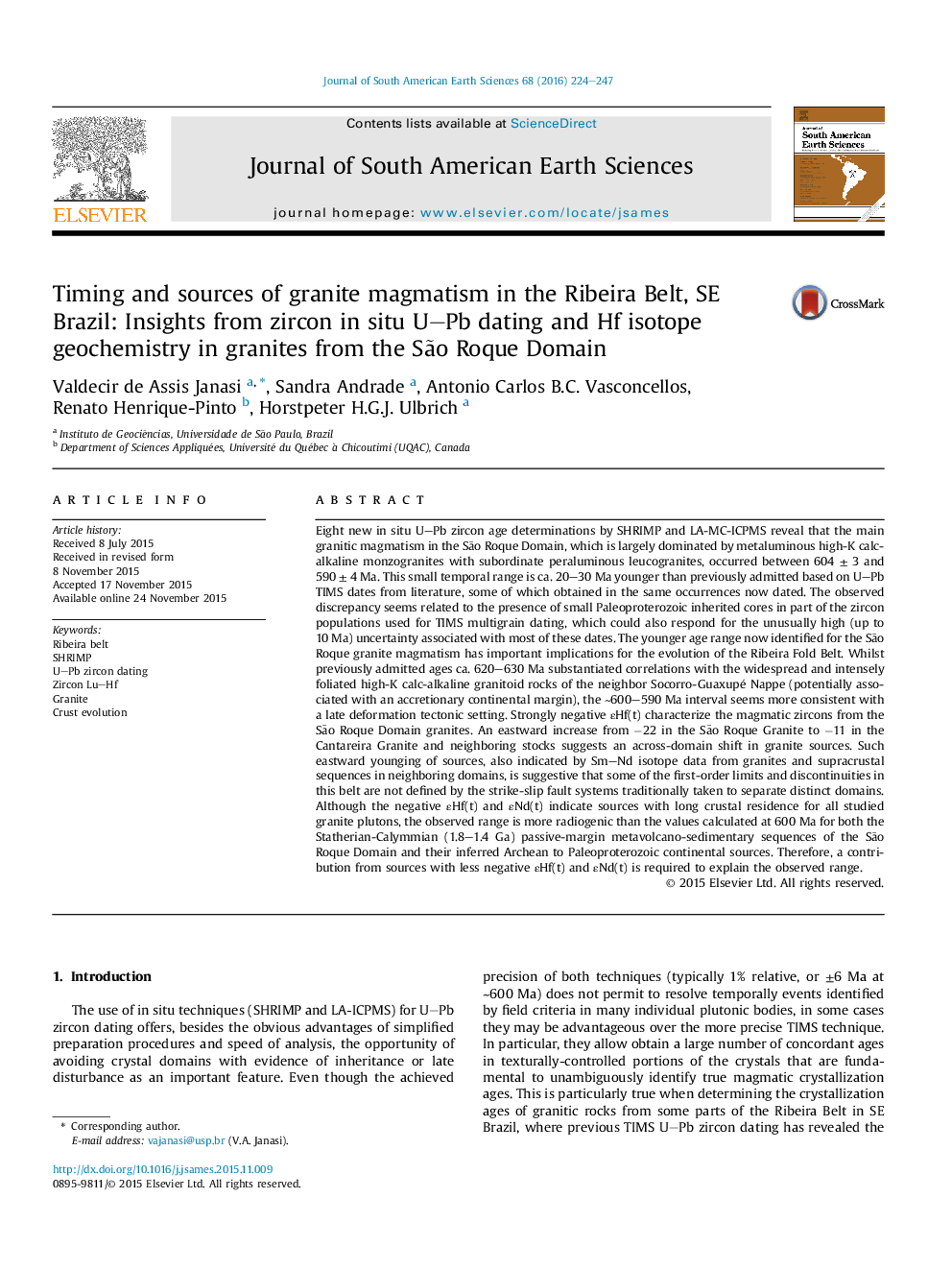| کد مقاله | کد نشریه | سال انتشار | مقاله انگلیسی | نسخه تمام متن |
|---|---|---|---|---|
| 4682044 | 1635142 | 2016 | 24 صفحه PDF | دانلود رایگان |

• U–Pb zircon granite ages in a short range 604–590 Ma.
• Age range is ∼20–30 Ma younger than previous estimates.
• Paleoproterozoic to Archean sources dominate Hf–Nd signature.
• Hf–Nd signature indicates eastward younging of sources.
Eight new in situ U–Pb zircon age determinations by SHRIMP and LA-MC-ICPMS reveal that the main granitic magmatism in the São Roque Domain, which is largely dominated by metaluminous high-K calc-alkaline monzogranites with subordinate peraluminous leucogranites, occurred between 604 ± 3 and 590 ± 4 Ma. This small temporal range is ca. 20–30 Ma younger than previously admitted based on U–Pb TIMS dates from literature, some of which obtained in the same occurrences now dated. The observed discrepancy seems related to the presence of small Paleoproterozoic inherited cores in part of the zircon populations used for TIMS multigrain dating, which could also respond for the unusually high (up to 10 Ma) uncertainty associated with most of these dates. The younger age range now identified for the São Roque granite magmatism has important implications for the evolution of the Ribeira Fold Belt. Whilst previously admitted ages ca. 620–630 Ma substantiated correlations with the widespread and intensely foliated high-K calc-alkaline granitoid rocks of the neighbor Socorro-Guaxupé Nappe (potentially associated with an accretionary continental margin), the ∼600–590 Ma interval seems more consistent with a late deformation tectonic setting. Strongly negative εHf(t) characterize the magmatic zircons from the São Roque Domain granites. An eastward increase from −22 in the São Roque Granite to −11 in the Cantareira Granite and neighboring stocks suggests an across-domain shift in granite sources. Such eastward younging of sources, also indicated by Sm–Nd isotope data from granites and supracrustal sequences in neighboring domains, is suggestive that some of the first-order limits and discontinuities in this belt are not defined by the strike-slip fault systems traditionally taken to separate distinct domains. Although the negative εHf(t) and εNd(t) indicate sources with long crustal residence for all studied granite plutons, the observed range is more radiogenic than the values calculated at 600 Ma for both the Statherian-Calymmian (1.8–1.4 Ga) passive-margin metavolcano-sedimentary sequences of the São Roque Domain and their inferred Archean to Paleoproterozoic continental sources. Therefore, a contribution from sources with less negative εHf(t) and εNd(t) is required to explain the observed range.
Journal: Journal of South American Earth Sciences - Volume 68, July 2016, Pages 224–247